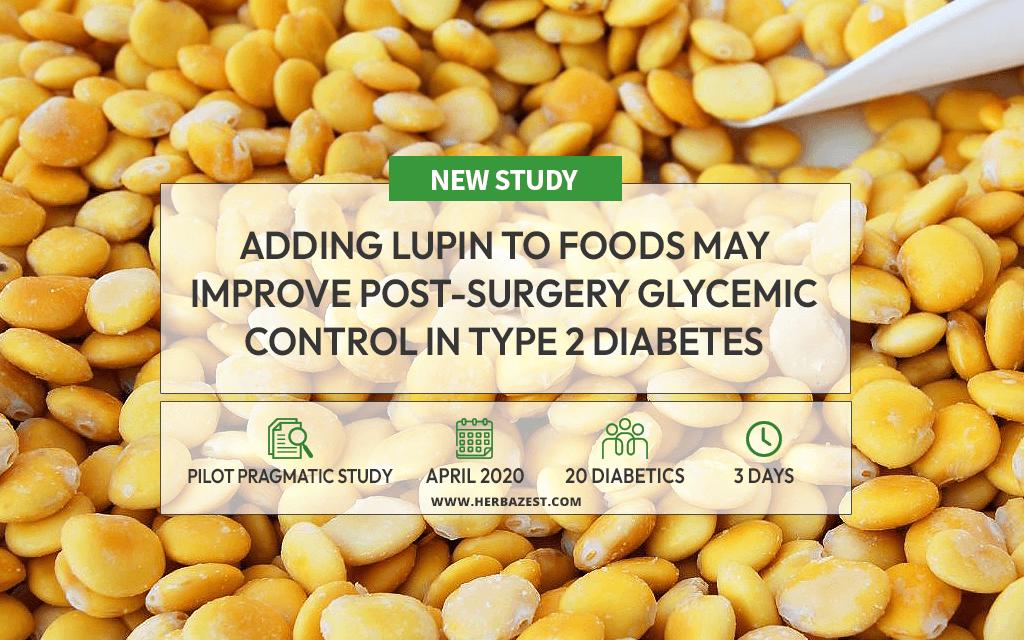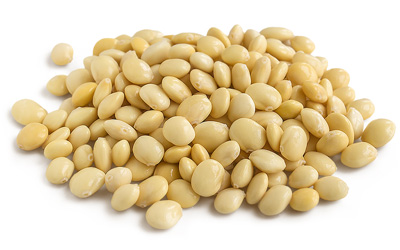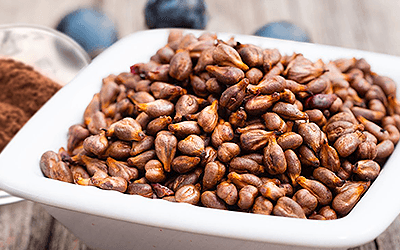For type 2 diabetes mellitus (T2DM) sufferers, maintaining normal glucose levels through dietary habits and lifestyle is of the utmost essence. This is particularly important when they undergo surgery as poor glycemic control has been associated with a higher risk of complications, including transfusions, delayed discharge, infections, and even death.1
In this context, hospital menu modifications (that is, replacing high sugar, low fiber products with diabetic-friendly options) can be the key to controlling blood sugar levels in diabetic patients for optimal surgical outcomes. Thanks to its low carbohydrate and high fiber content, prebiotic oligosaccharides, and low glycemic index (GI), using lupin for diabetes control has been shown beneficial by a handful of previous studies.2
This study focused on further exploring the effects of lupin-enhanced foods on glycemic control in post-operative T2DM patients.
The Study
This pilot crossover pragmatic study was conducted in a hospital setting by researchers from the Australian La Trobe University. The trial took place in Warringal Private Hospital in Melbourne, Victoria, Australia. The results of this trial were published in the April 2020 edition of the Nutrients journal.
The recruits were 20 hospitalized type 2 diabetes patients aged over 50 that have undergone surgery recently. Over a period of three days, patients received two biscuits twice daily, at morning (10 a.m.) and afternoon (2 p.m.) tea:
- Day 1: a total of four lupin biscuits (20% lupin flour)
- Day 2: a total of four spelt biscuits
- Day 3: a total of four standard hospital plain, sweet biscuits
Besides these mid-meal snacks, patients received three standard, 45-gram carbohydrate-controlled meals. No additional snacks and sugar-containing beverages were allowed during the study.
Continuous glucose monitoring; hunger, fullness and palatability ratings; and bowel movements were recorded before and throughout the study.
The Results
In terms of glycemic control, researchers observed a significant decrease in interstitial glucose levels after dinner in participants who consumed lupin biscuits at morning and afternoon tea. These findings provide strong evidence of lupins' ability to cause the “second-meal effect,” which is highly beneficial for longer lasting blood sugar control.3
Additionally, participants rated their satiety levels the highest on the lupin biscuit day.
What Does this Mean?
As shown by the results of this study, lupins have the potential to provide immediate as well as lasting glycemic control in post-surgical type 2 diabetes patients.
However, the discoveries of this study are meaningful not only in the hospital setting, but also for diabetes sufferers in general. Enhancing the diabetic diet with low-glycemic, high-fiber lupins can be an important strategy in disease management.
To date, this is the first study revealing lupin's second-meal effect. More investigations are recommended to further understand this unique phenomenon.
Other diabetes-friendly herbs include lucuma, cinnamon, and yams.
Sources
- Nutrients, Effect of Lupin-Enriched Biscuits as Substitute Mid-Meal Snacks on Post-Prandial Interstitial Glucose Excursions in Post-Surgical Hospital Patients with Type 2 Diabetes, 2020
Footnotes:
- Foot and Ankle International. (2014). Effect of Diabetes Mellitus on Perioperative Complications and Hospital Outcomes After Ankle Arthrodesis and Total Ankle Arthroplasty. Retrieved August 25, 2020 from https://journals.sagepub.com/doi/abs/10.1177/1071100714555569
- Frontiers in Physiology. (2017). Short-Term Effects of Lupin vs. Whey Supplementation on Glucose and Insulin Responses to a Standardized Meal in a Randomized Cross-Over Trial. Retrieved August 25, 2020 from https://www.frontiersin.org/articles/10.3389/fphys.2017.00198/full
- Journal of Nutrition and Metabolism. (2012). Whole Grains, Legumes, and the Subsequent Meal Effect: Implications for Blood Glucose Control and the Role of Fermentation. Retrieved August 25, 2020 from https://www.ncbi.nlm.nih.gov/pmc/articles/PMC3205742/





